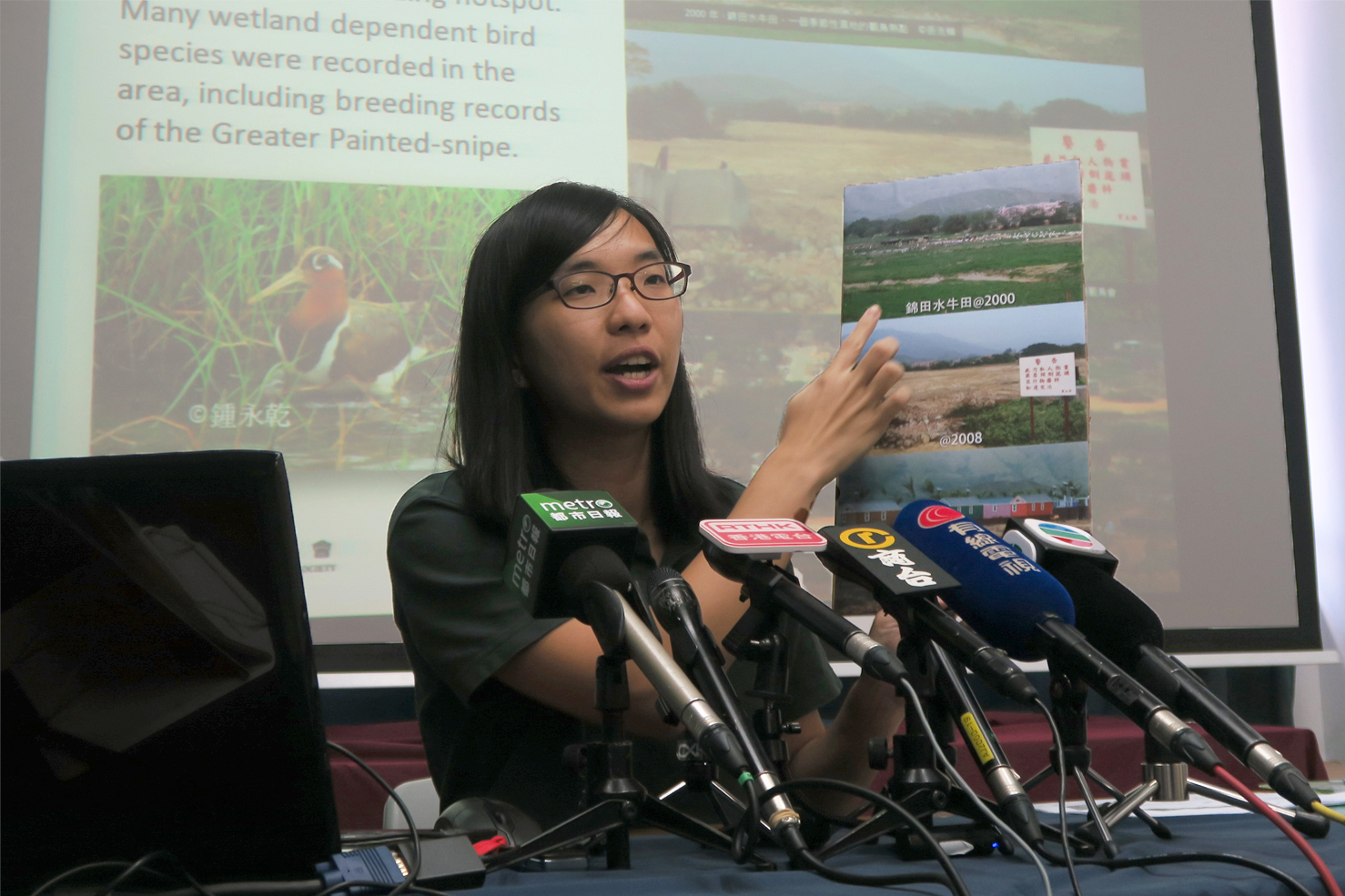(2 August 2018) The Hong Kong Bird Watching Society (HKBWS) today released “Hong Kong Headline Indicators for Biodiversity and Conservation 2015-2017”, which demonstrates how a weakening of planning protection for green zones and years of poor enforcement are undermining significant recent progress in other areas of biodiversity conservation in Hong Kong.
Now in its fourth edition this report uses data from Government departments and other authoritative sources to provide the only systematic review of the state of Hong Kong’s biodiversity effectiveness of the conservation action to protect it.
Mr. Apache Lau, Chairman of HKBWS said, “Agriculture, Fisheries and Conservation Department and Environment Bureau have made progress in launching its Biodiversity Strategy and Action Plan (BSAP) as a broad framework for conservation under the Convention on Biological Diversity (CBD). However their good intentions are being compromised by the Government’s persistent failure to enforce effectively against trashing of ecologically-important sites and its disgraceful undermining of the zoning that protects our biodiversity[i].”
The data presented in this year’s report again shows that weaknesses both in the laws themselves and in their enforcement is limiting the Government’s ability to prevent the trashing[ii]. It also shows that the approval rate by the Town Planning Board of large numbers of developments in Agriculture (61%) and Green Belt (48%) zones - despite the fact that both zonings carry a presumption against development[iii].
During the preparation of this report HKBWS noted an associated trend for the Government to rezone Green Belt sites for development purposes. This process was initiated under former Chief Executive CY Leung, along with assurances that only degraded sites of “insignificant buffering effect and relatively low conservation value”. The reality is very different, with several well-wooded sites that host important species and have significant buffering value being targeted[iv]. This issue has become more significant as the Government is now actively seeking to develop land inside Country Parks, with same assurances that only land of low ecological value will be developed[v].
So the Government has not only failed to initiate the necessary changes in policies and legislation to halt ecological degradation of important habitats, it is actively pursuing the development of sites that will inevitably accelerate the rate of ecological loss. This runs directly contrary to the intent of Hong Kong’s own planning laws and conservation policies, but also the national direction under the Greater Bay Area initiative for a “green and healthy living environment” and the Ecological Protection Red Line system for conservation and the CBD at the international scale.”
Ms. Woo Ming Chuan, Senior Conservation Officer of HKBWS added, “The Government’s track record of rezoning GBs give the public no cause for trust and confidence that its stated intention to develop the Country Parks would be limited to areas with ‘relatively low’ ecological and public enjoyment value. Indeed the failures of process already emerging in relation to the Country Parks further undermine the Government’s sincerity. We urge the public not to select the Country Park option in the land supply consultation, as this would only lead to even more destruction and disturbance to protected areas, and at the same time undermining and challenging the Country Park Ordinance.”
The Report also highlights how ongoing habitat destruction continues to threaten native species, leading to a loss in Hong Kong’s biodiversity[vi]. The peak count of waterbirds in the Deep Bay area continues to follow a declining trend, while some nesting colonies of breeding egrets and herons were damaged, including the infamous incident at Tai Po Market egretry. Reclamation works of various approved development projects in North Lantau waters has driven the number of Chinese White Dolphin sightings in the area around the Brothers to zero.
On the plus side, new conservation actions were proposed under the BSAP[vii]. These include commitments, supported by funding to:
- preparation and implement biodiversity management plans in Country Parks, Special Areas, Marine Parks and Marine Reserves,
- compile a list of threatened species for Hong Kong to guide conservation actions,
- formulate and review species action plans, and
- increase the capacity for management of invasive alien species.
These are important steps to effectively manage and protect the biodiversity of Hong Kong. Progress was also made in the control of invasive species[viii], the protection of globally endangered species such as combating the illegal trade in ivory[ix], and mainstreaming biodiversity conservation into drainage and river revitalization works[x].
The HKBWS encourages members of the public who value Hong Kong’s natural heritage to make written submissions to the Government (deadline: 26 September 2018) to object to the land supply options which would lead to irreversible environmental changes in Hong Kong. It is important to stop the current environmental degradation and consider other developed or formed land options first to ensure effective protection and conservation of Hong Kong’s biodiversity.
The headline indicators in this report were developed based on the report “Nature Conservation: A new policy framework for Hong Kong” published by Civic Exchange in 2011, and were selected through discussions with environmental NGOs, academics, consultants, government officials and other stakeholders. The data used in the report was collected from Government departments, environmental NGOs and academics.
###
Click to download the full report!
[i] p.39-40 of the Headline Indicator Report 2015-2017
[ii] p.5-9 of the Headline Indicator Report 2015-2017
[iii] p.18-22 of the Headline Indicator Report 2015-2017
[iv] p.19-20 of the Headline Indicator Report 2015-2017
[v] p.14-15 of the Headline Indicator Report 2015-2017
[vi] p.29-32 of the Headline Indicator Report 2015-2017
[vii] p.37-39 of the Headline Indicator Report 2015-2017
[viii] p.25-26 of the Headline Indicator Report 2015-2017
[ix] p.10-11 and p.35 of the Headline Indicator Report 2015-2017
[x] p.23-24 of the Headline Indicator Report 2015-2017
Further reading:
Hong Kong Headline Indicators for Biodiversity and Conservation 2013 - 2014
Hong Kong Headline Indicators for Biodiversity and Conservation 2012
Hong Kong Headline Indicators for Biodiversity and Conservation 2011




